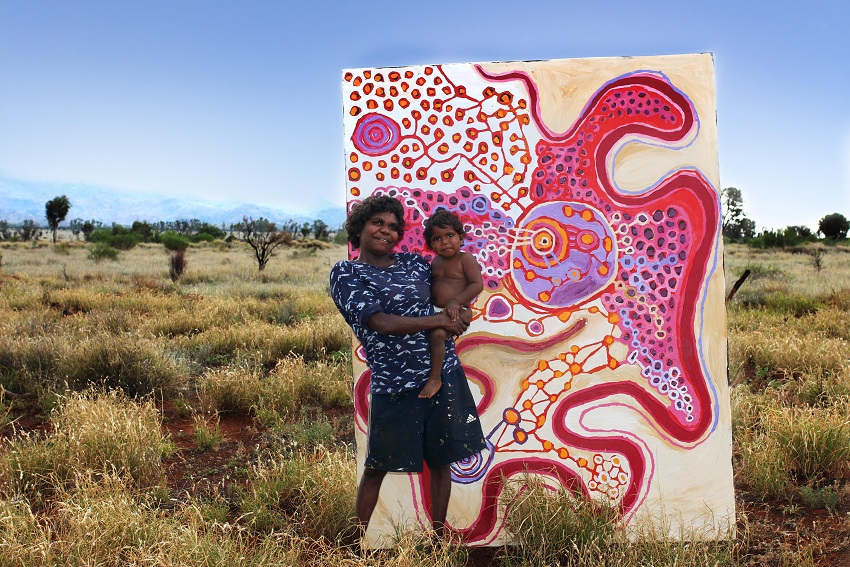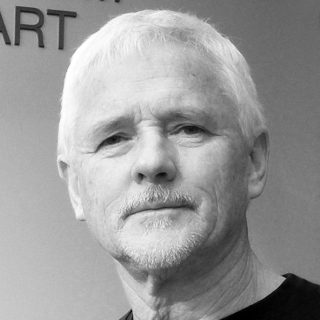
John Neylon
John Neylon is an award-winning art critic and the author of several books on South Australian artists including Hans Heysen: Into The Light (2004), Aldo Iacobelli: I love painting (2006), and Robert Hannaford: Natural Eye (2007).
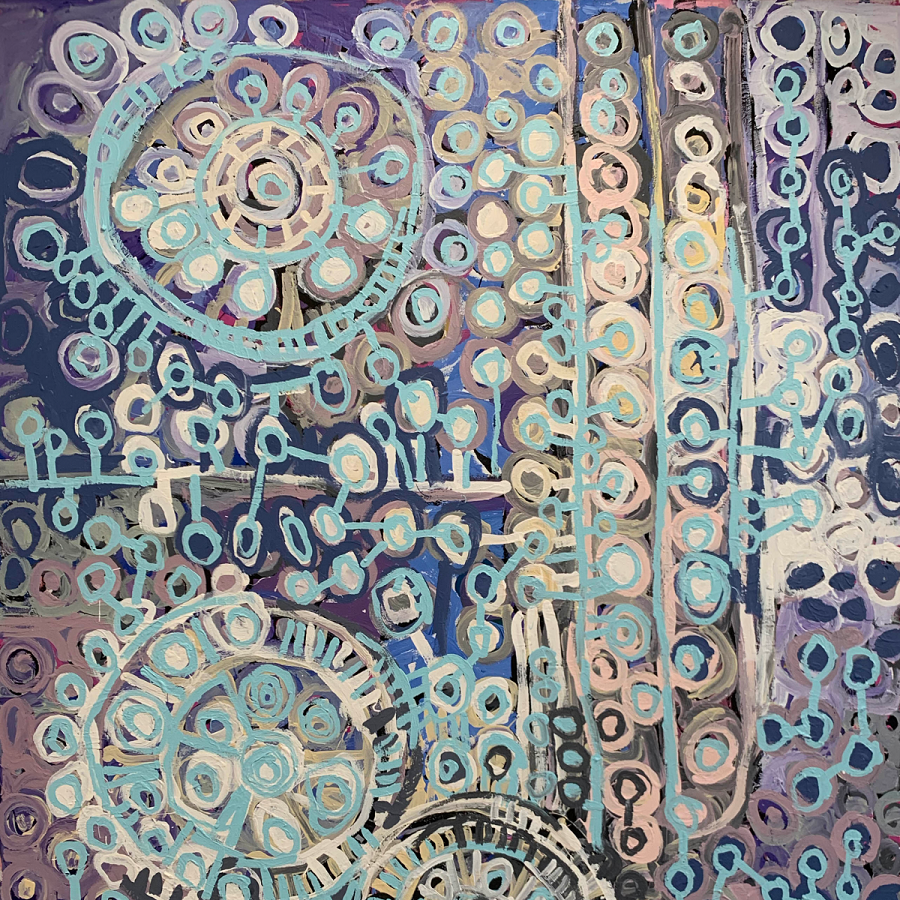
The Anangu Pitjantjatjara Yankunytjatjara Lands are home to seven art centres that provide an invaluable base for the region’s thriving artistic community. The honourary eighth art centre, Light Square’s APY Gallery, offers a home away from home.
The painting studio attached to the APY Gallery in Adelaide is an equivalent of the painting centres to be found across the Anangu Pitjantjatjara Yankunytjatjara Lands in remote north-west South Australia. In common with paintings produced within these spaces, the works in progress here are compellingly bold in concept and execution. Individual trademark styles are evident in colour selection, mark making and design aesthetic, but collectively the works communicate a sense of breadth and celebration of the complex interrelationships of all living things.
Artist Yaritji Young describes this sense of being in control. “Artists out here are known for being brave and adventurous; we push new ideas while still protecting and keeping our Tjukurpa strong for our children and grandchildren. This is important for them to see.”
How brave and adventurous these artists are will be demonstrated in he APY Art Centre Collective SALA exhibition Watarkurinytja Wiya – Don’t Forget which features a selection of new works by early-career artists from the APY Lands. There are a number of agendas going down. Don’t Forget is a reboot after months of COVID-19 shutdowns. There is much discussion in the art community about the flow-on effect of artists spending more time in their studios without the usual social and work distractions. The participating APY artists have not wasted the opportunity and believe that this exhibition will demonstrate their level of commitment to their practice.
According to the SALA program: “The title also alludes to the current Black Lives Matter movement and the importance of remembering not just the injustices of the past but the injustices Anangu experience day to day. Importantly it is about remembering what is most important to Anangu: Tjukurpa (Culture), Manta (Country), Family (Waltja). These compelling artworks share and celebrate Tjukurpa (Dreaming stories), which have been passed down through generations.”
One of the primary objectives of the APY Art Centre Collective is to support and promote established and emerging artists. This exhibition introduces Margaret Richards, Leah Brady, Yaritji Heffernan, Katie Curley, Jennifer Ingkatji, Inawintji Williamson, Rhoda Tjitayi and Tjinkuma Wells. Visiting this exhibition during SALA or checking out the APY Gallery’s ongoing exhibition programs is a way of following the careers of talented younger artists.
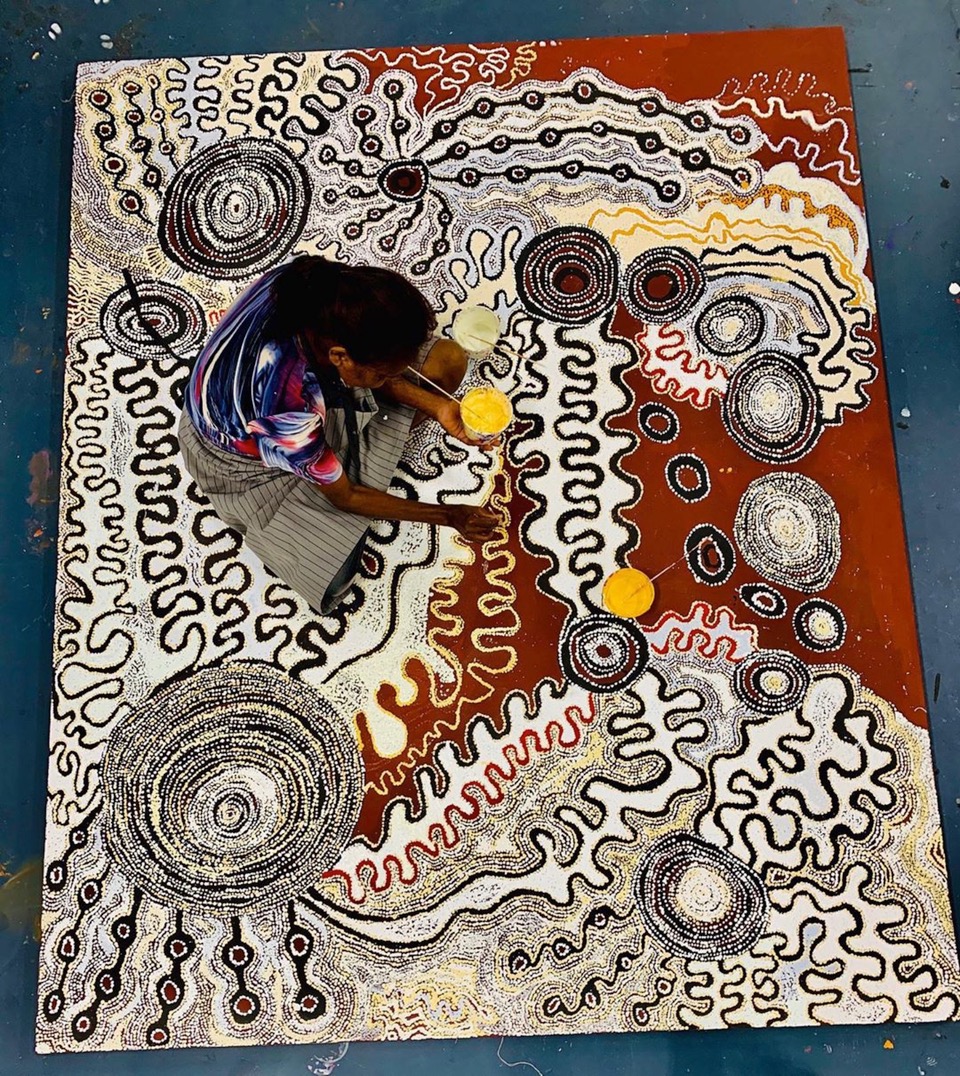
The APY Art Collective has addressed long-standing issues associated with the Indigenous art market by relocating the key decision-making to the communities themselves. The Art Collective is a group of 11 Indigenous-owned and -governed enterprises, based in the APY Lands. There are seven art centres within the Lands. Skye O’Meara, APY Art Centre Collective general manager, refers to the APY Gallery and studio in Light Square as the “eighth centre”. From O’Meara’s perspective, this project is a new model of operating – for a number of reasons. The Collective is owned and directed by the APY communities. A key strategy in helping young and emerging artists showcase their work is the establishment of dedicated galleries, one in Adelaide and the other in Sydney. The APY Collective business model represents a new way to help remote and economically disadvantaged communities to be more self-sufficient. Some 84 per cent of sales of artwork ($1.6 million) has been returned to the Lands communities through the APY Art Centre in Adelaide (sales and special commissions and projects).
Art centres are the only source of non-government income in most of the APY communities. To put this in context, the seven art centres facilitate and market the work of over 500 Anangu artists. Standing in the studio adjoining the gallery, it is easy to understand why this space means so much to the artists who come here to work. It was a quiet morning – only four or five artists intent on their canvases. But the previous week there were over 20. These artists are in Adelaide for varying lengths of time for medical reasons or to spend time with family. Having this studio space means that emerging or established artists can keep working. The studio also provides a workshop base, particularly for younger artists, to participate in cross-media skills workshops and the like.
O’Meara sees particular value in emerging artists, through the gallery and studio, becoming familiar with the wider art world and establishing contacts, as any emerging artist must, with gallerists and art agencies. Until the establishment of the Art Collective galleries, O’Meara believes that it was difficult to establish commonly understood and workable pathways for emerging artists to follow. Add to this the significant professional development opportunities provided through participation in Art Collective-sponsored, large-scale collaborative art projects. Tarnanthi, in particular, she regards as playing a pivotal role, not only in promoting APY artists but in encouraging them to be brave and develop new skills in telling their stories. O’Meara is spurred on by a frustration that, to date, “extraordinary, powerful work that is internationally celebrated [has] not impacted social challenge and disadvantage”.
If the Art Collective business model succeeds, change will follow.
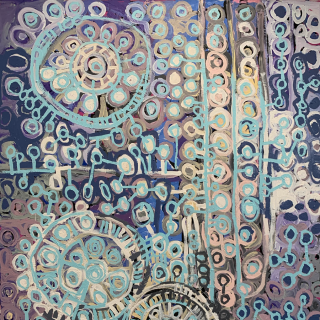

John Neylon is an award-winning art critic and the author of several books on South Australian artists including Hans Heysen: Into The Light (2004), Aldo Iacobelli: I love painting (2006), and Robert Hannaford: Natural Eye (2007).
